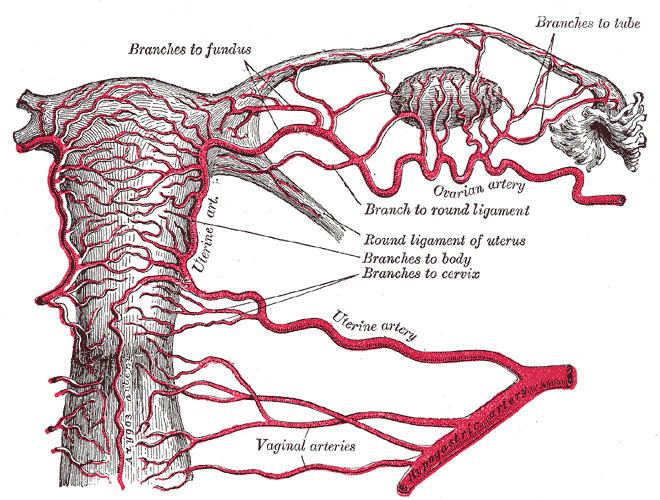Dorlands/Elsevier a_61/12155320 | Vein ovarian vein Latin arteria ovarica | |
 | ||
Branches tubal branches of ovarian artery | ||
The ovarian artery is an artery that supplies oxygenated blood to the ovary in females. It arises from the abdominal aorta below the renal artery. It can be found in the suspensory ligament of the ovary, anterior to the ovarian vein and ureter.
Contents
Structure
The ovarian arteries are paired structures that arise from the abdominal aorta. After emerging from the aorta, the artery travels down the suspensory ligament of the ovary, enters the mesovarium, and may anastamose with the uterine artery in the broad ligament.
The ovarian arteries are the corresponding arteries in the female to the testicular artery in the male. They are shorter than the internal spermatics.
The origin and course of the first part of each artery are the same as those of the internal spermatic, but on arriving at the upper opening of the lesser pelvis the ovarian artery passes inward, between the two layers of the ovariopelvic ligament and of the broad ligament of the uterus, to be distributed to the ovary.
Branches
Small branches are given to the ureter and the uterine tube, and one passes on to the side of the uterus, and unites with the uterine artery. Other offsets are continued on the round ligament of the uterus, through the inguinal canal, to the integument of the labium majus and groin.
Function
The ovarian artery supplies blood to the ovary and uterus. The ovarian arteries swell during pregnancy, in order to increase the uterine blood supply.
